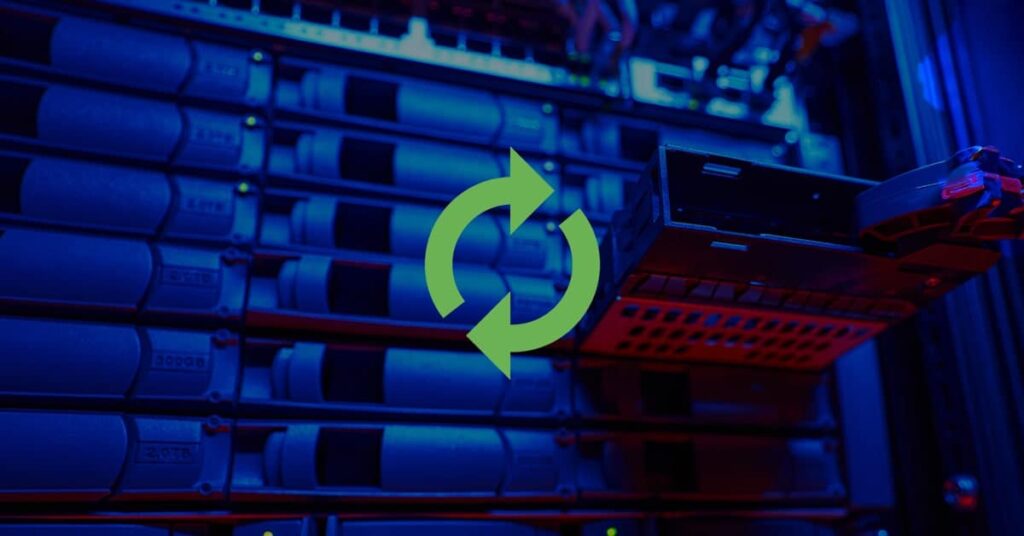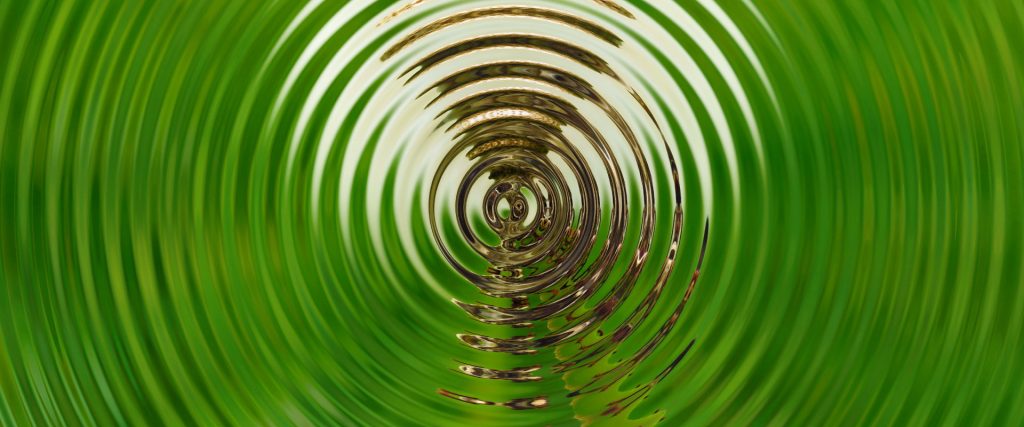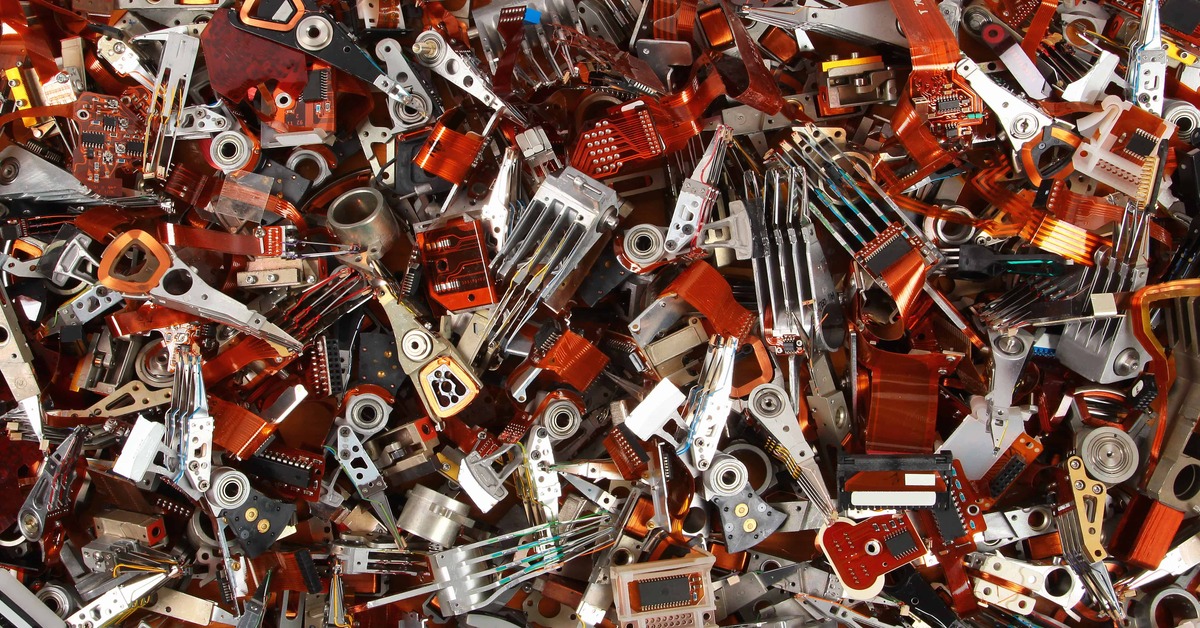As storage needs scale, coaxing companies to minimize the electronic waste (“e-waste”) associated with used storage devices is a perpetual challenge. Given the rising complexity of hardware components, sustainable storage lifecycles require innovative solutions for efficient hard drive recycling and reuse. The good news is that advances in recycling techniques can benefit both the environment and your bottom line if you are strategic about value recovery.
This article looks at emerging trends in HDD recycling, such as new disassembly methods and the recovery and reuse of rare components. We’ll also take a look at the R2v3 (responsible recycling version 3) certification, which is a global standard for sustainable practices in electronics. Finally, we use industry leader Seagate as a case study for the application of circularity principles and its operational effects.
HDD Disassembly Simplified
Before you can extract value from used HDD components, you need to remove them. This requires an efficient way of dismantling hard drives. Garner’s “Diskmantler” is one possible answer to this challenge. It is an automated disassembly solution that uses shock, harmonics, and vibrations to separate an HDD’s valuable components, such as magnet, case, board, platter, and so on.
The device can separate the green-board in just eight seconds, but the disassembly time can be adjusted between 8-120 seconds according to user needs. It operates continuously without needing to cool down and can be connected to a HEPA vacuum to filter out particles. Drives can also be manually inserted into the media slot or fed through a conveyor belt, with the disassembly process being completely hands-free.

The Diskmantler is easy use and compact design makes it a practical solution for diverse operational needs. Properly disassembled parts means better recycling possibilities and better value.
For end-of-life HDDs, Garner recommends pairing the Diskmantler with their “super degausser,” called “the Demag.” While normal degaussers sanitize magnetic media with powerful magnets, the “super” version also ensures rare earth magnets do not clump together once degaussed. While patents are pending for the Diskmantler and the Demag, both are GDPR, HIPAA, and NIST 800-88 (rev. 1) compliant, though IEEE 2883 compliance is currently absent.
Our robot friends can also play a role in recovery. For example, Microsoft’s robotic disassembly system, originally created in 2022 as part of an in-house hackathon, uses computer vision and robotics to disassemble, sort, and retrieve components from hard drives. It will be deployed in circularity centers as part of the firm’s overall goal to achieve zero waste by 2030. Meanwhile, Molg, a firm applying robotics to circular manufacturing, is working on its own nondestructive high-precision solution.

Related Reading
There’s more to combating e-waste than recycling, of course. Developing sustainability standards and enabling destruction-free sanitization are also a crucial part of the puzzle.
Recovering Magnets From Used HDDs
Once HDD components are properly separated, the next step is recovering reusable and valuable materials. Recovering parts made from rare earth elements (REEs) is particularly important. These rare metals are predominantly sourced from a limited number of mines, and nonconventional sources of REEs such as coal ash aren’t currently environmentally viable. Since mining REEs has significant environmental impact, reuse of REE magnets and metals is particularly important in reducing embodied carbon in HDDs.
REEs such as neodymium-iron-boron are crucial components within the magnetic assembly that controls the actuator arm in an HDD. Unfortunately, existing shredding techniques only recover base metals but not REEs present in the magnetic components of an HDD.
If you can recover REE magnets, reusing the whole magnetic assembly is better than recycling it. A 2020 study supported by the Critical Materials Institute compared emerging technologies in value recovery in HDD recycling. The study found that HDD reuse was the most environmentally friendly practice, followed by directly reusing magnet assemblies, magnet-to-magnet recovery, and finally metal recycling.

But just because reuse is best doesn’t mean recycling should be ignored. The lifecycle assessment in the study emphasizes that advanced recycling methods can contribute much towards reducing the environmental impact of e-waste arising out of end-of-life HDDs.

Related Reading
Nearline hard drives, the workhorse of the modern data center, are unlikely to be supplanted by flash anytime soon.
Recycling Platters
Another avenue for sustainable e-waste management is recycling aluminum from HDDs. In a 2023 study in ‘Materials’, Polish researchers compared alternative recycling techniques for aluminum-based hard drive platters. The two methods addressed were traditional melting methods, on the one hand, and plastic consolidation on the other, (plastic here referring to the plasticity of the material).
The study found that when broken into small pieces and combined under high pressure (plastic consolidation), aluminum from HDD platters has properties comparable to the aluminum obtained after melting, making it appropriate for varied industrial use. The findings suggest that plastic consolidation is an energy efficient and cost effective alternative to the traditional melting technique, offering a more sustainable recycling method.
Additionally, a metal smelter can be used to convert certain scrap material in HDDs into raw material. Although the smelting process is energy intensive and requires technical expertise, it highlights the potential for recovering metal parts, thus reducing the need for fresh mining.
R2v3
To ensure environmentally responsible recycling practices, data security, legal compliance and worker safety, ITAD companies can obtain R2v3 (Responsible Recycling Version 3) certification, issued by Sustainable Electronics Recycling International (SERI).
RSv3 certification offers comprehensive management of electronic devices through its R2 certified facilities and a network of downstream vendors. In addition to encouraging repair as a means to effective reuse, it emphasizes enhanced data security measures and quality testing to build trust. It also provides guidance for the recycling of specialty electronics such as medical and scientific equipment.
For smaller facilities to receive certification, R2v3 offers clear process requirements. It lets companies add additional R2 certification for separate locations, enabling scalability as facilities expand. Version 3 (v3) of the R2 certification updates these guidelines in line with the rising complexities of electronic devices.
With the broader aim of promoting a circular economy, building trust, and driving innovation, R2v3 certification has become a global standard for responsible electronics re-use.

Related Reading
Certified refurbished hard drives are rigorously tested, and usually available at a discount. Learn how you can help your company lower costs while procuring the storage inventory you need.
Factory Recertified Drives & The Case For Sustainable Storage
Seagate’s Circularity Initiative
Hard drive recycling is more than the sum of its parts. It’s not just about individual technologies: it’s about tying them together into an overall HDD lifecycle plan. Leading hard drive manufacturer Seagate exemplifies this strategy by integrating circularity both within the company’s operations and by creating innovative sustainability models for its products.
Seagate’s circularity model incorporates recovery, recertification, and redeployment. As per its whitepaper, the firm can take back, renew, and repurpose drives for reuse in secondary markets. Seagate also encourages the reuse of end-of-life cycle product components in new drives, as recyclable materials are converted into new raw materials.
But does it work? According to Seagate’s FY2023 environment, social, and governance (ESG) report, the firm prevented over 533 metric tons of e-waste by refurbishing and redeploying 1.19 million hard drives and solid-state drives.

Related Reading
Many hands make light work. The Circular Drive Initiative brings together industry leaders such as Seagate to figure out ways to combat e-waste and promote sustainable storage.
The Circular Drive Initiative’s Push For Sustainable Data Storage
In line with its commitment to sustainability practices, Seagate has also focused on developing Autonomous Drive Regeneration (ADR) technology. ADR is a self-correcting system that can reconfigure and restore a drive at the customer site without human intervention. It helps reduce e-waste since ADR can extend the lifetime of a drive. And it helps improve customer confidence since autonomous on-site repair means less downtime and fewer data security concerns.

Related Reading
Seagate also recertifies hard drives, reissuing them at a lower price after a rigorous battery of tests. Good as new, and sustainable too!
In Conclusion
Reducing the e-waste generated from junked HDDs requires the adoption of circularity models for a hard drive’s lifecycle. The reuse and recovery of components is essential for environmental and economic sustainability. Whether you’re shaking drives for disassembly, smelting scrap materials, or reusing drive magnetic assemblies, getting creative in applying innovative recycling techniques is key to making storage sustainable while recovering value.
Robust standards like R2v3 certification can help create awareness and simplify the recycling process. Industry leaders like Seagate and organizations like the Circular Drive Initiative are leading the way, showcasing a sustainable and responsible approach to e-waste management by coupling economic benefits with technological innovation. Working in tandem, these strategic efforts can help those who use HDD at scale to significantly reduce their environmental footprint.
Find out how Horizon can help you recover value from your used storage devices and reduce total cost of ownership.











